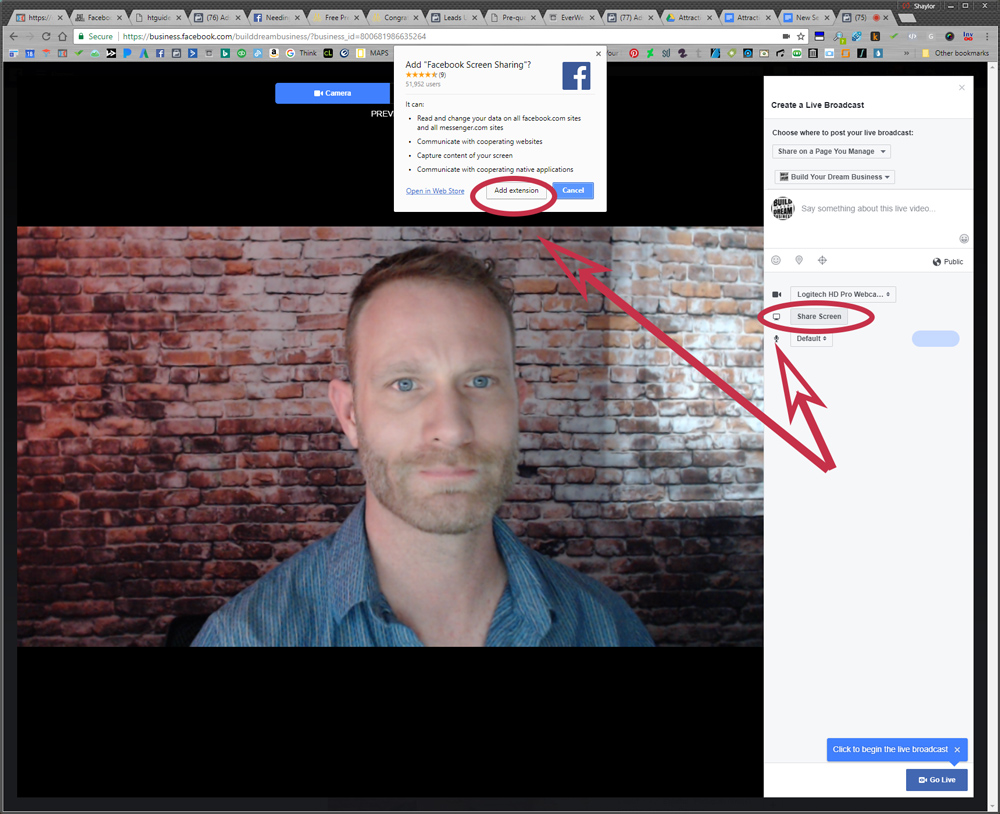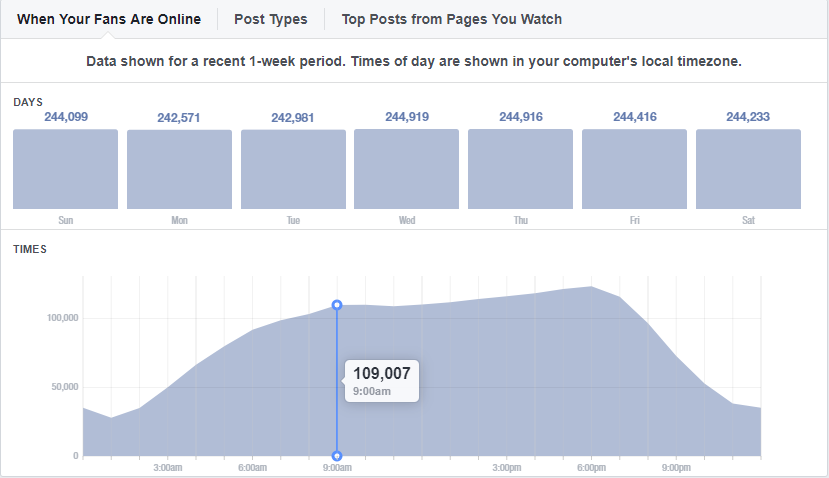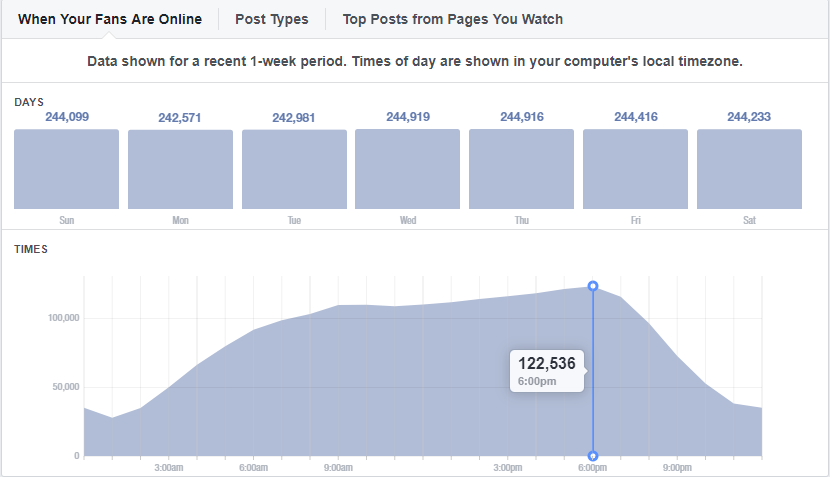Our blog post last week looked at social media research from 2016 showing the most popular social networks around the world. Not surprisingly, Facebook was number 1. Now that we got our question answered about WHAT social media people are using, we started to think about HOW people are using it so we would know when is the best time to post on social media.
You hear advice all the time about how important it is to post. If you have created a Facebook, Pinterest or Instagram or Twitter account, use it. It doesn’t do you any good to have an account that is dead when people go to look at it.
The flipside of that is that you don’t want to be posting when no one is looking. It is important to post, yes, and if you’re already doing all you can and you’re posting at midnight on a Saturday, pat yourself on the back and let it go. When you’re ready to take the next step, you’ll want to try and optimize when the most people will see your post.
We went to an authority on social media, the posting scheduling and management platform Hootsuite, who compiled the results of a bunch of studies talking about exactly when is the best time to post on social media. Here’s what we found out.
Timing is everything.
Think about your target audience. If your demographic is working professionals, think about the fact that they are at meetings and at their desk during typical office hours. Yes, they scroll through Facebook during their lunch breaks, but a good time to reach them is in the evenings, when they’re home sitting on the couch. That’s true for a lot of the working professions. We are at our desks pretty typically Monday through Friday, but that’s not when a lot of people are on social media. If they’re just logging on at 8pm, they’re less likely to see the post you made at 8am. And if it’s for a free smoothie if they bring a friend by your juice cart, it won’t matter to them. Post that free smoothie deal in the evening, AND in the morning the next day.
You have 5 hours minutes for your Facebook post to take effect.
A Facebook post achieves 75 percent of its reach within five hours of being posted.
You have 3 hours for your tweet to have the same effect.
This research shows that a tweet achieves 75 percent of its reach in less than three hours. According to Hootsuite’s own data, the best time to post on Twitter is at 3pm Monday through Friday. This is when the highest amount of clicks and retweets occur on Twitter.
The best time, says Hootsuite, to post on Facebook is between noon and 3pm Monday, Wednesday, Thursday and Friday. On the weekends, the best time is Saturday and Sunday between noon and 1pm. This is a natural downtime when a lot of people are taking breaks and eating lunch, so that makes sense.
It may take a little bit of trial and error to figure out what your audience’s best time to be on social media is, but really put some thought into your target demographic and how they spend their day. This means you should have a really clear idea of what, and who, your target demographic is. (Hmmm…this sounds like a good idea for a future blog post!)
For instance, if you’re targeting stay-at-home moms, your best time is probably 11am to 1pm, during prime baby and toddler nap time. If you’re targeting hungry people searching for dinner deals, perhaps you want to post between 5 and 7pm.
Test some different posting schedules and see if you get a higher level of response. It also doesn’t hurt to ask your customers what the best time is to reach them. In general, Hootsuite says they see lower engagement on the weekends. But even then, noon and 1pm seems to be a magic time for spikes in clicks.
What about Instagram?
Instagram no longer posts pictures in chronological order. The posts with the most likes and comments will always appear higher up in a user’s feed. To optimize your use of Instagram, again, really get to know your target demographic and how they spend their day. Many people scroll through their feeds during their lunch hour. But, if you want to get the most likes before your lunch hour crew starts scrolling, you might want to post earlier in the morning.
Are you trying to reach an audience that spans several time zones?
Or a global audience? Rethink your strategy. There’s a huge difference between posting at 11am to reach someone on the East Coast when you’re in the Pacific time zone. At 11am in Oregon, it’s already 2pm in New York, and you’ve missed a good window for your morning and lunch audience. Hootsuite suggests creating a Twitter handle for each region you’re trying to reach. You can set the time zone for each region and still manage them all from the same platform. If you’re trying to announce a flash sale, and you want people to search on your site during their lunch break, timing it for their time zones is crucial.





